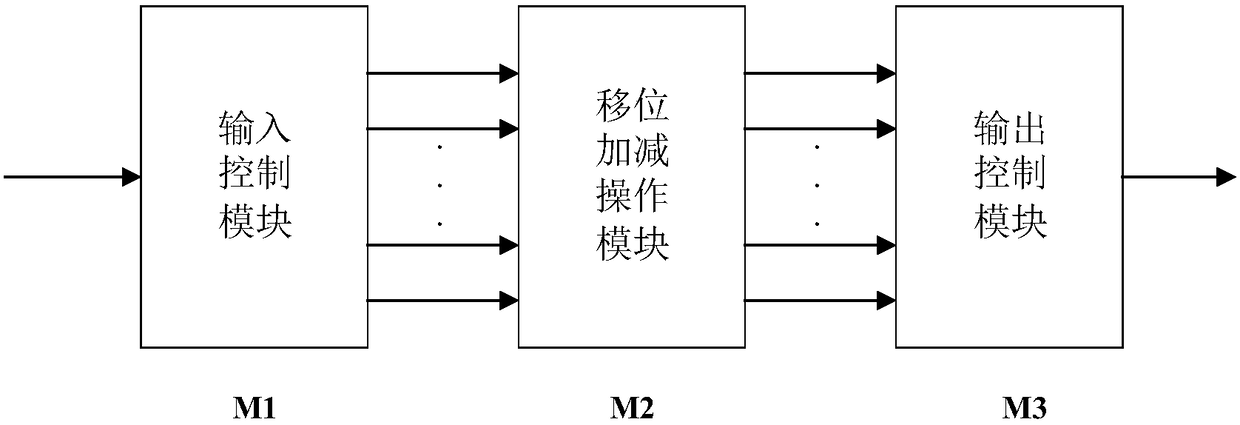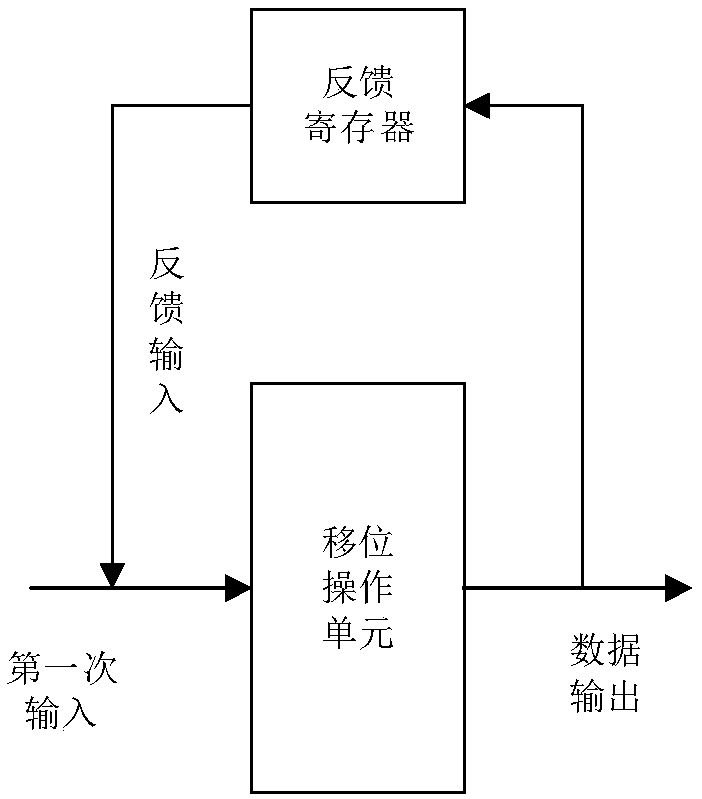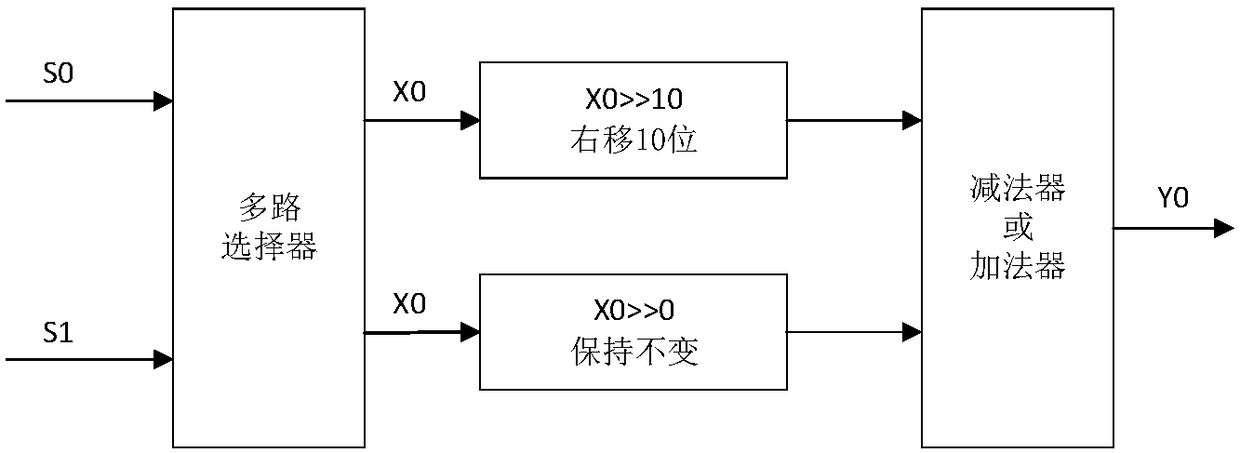Inverse Fourier transformation algorithm applied to NB-IoT (Narrow Band Internet of Things)
A technology of Fourier inverse transform and algorithm, applied in the direction of digital transmission system, electrical components, modulated carrier system, etc., can solve the problems of waste of resources, etc., and achieve the effect of reducing usage, improving utilization rate, and low processing delay
- Summary
- Abstract
- Description
- Claims
- Application Information
AI Technical Summary
Problems solved by technology
Method used
Image
Examples
Embodiment 1
[0024] An inverse Fourier transform algorithm applied to NB-IoT, comprising the following steps:
[0025] S1: The data to be processed is input to the input control module for data conjugate operation and serial-to-parallel conversion;
[0026] S2: The converted data is input to the shift addition and subtraction operation module for multiplication and addition of the data and the twiddle factor;
[0027] S3: The data processed in step S2 are output to 12 output control modules each time for addition and taking the conjugate sum and dividing by N, and then output the data calculated by inverse Fourier transform.
[0028] Further, the specific process of the step S2 is:
[0029] 1) Divide every 12 data into 7 groups, in which the mapped positions of the two data in the paired 5 groups are symmetrical, and the two rotation factors multiplied with it are conjugated to each other, using the conjugate characteristics, share a set of twiddle factors, multiplex multipliers, and the...
PUM
 Login to View More
Login to View More Abstract
Description
Claims
Application Information
 Login to View More
Login to View More - R&D
- Intellectual Property
- Life Sciences
- Materials
- Tech Scout
- Unparalleled Data Quality
- Higher Quality Content
- 60% Fewer Hallucinations
Browse by: Latest US Patents, China's latest patents, Technical Efficacy Thesaurus, Application Domain, Technology Topic, Popular Technical Reports.
© 2025 PatSnap. All rights reserved.Legal|Privacy policy|Modern Slavery Act Transparency Statement|Sitemap|About US| Contact US: help@patsnap.com



